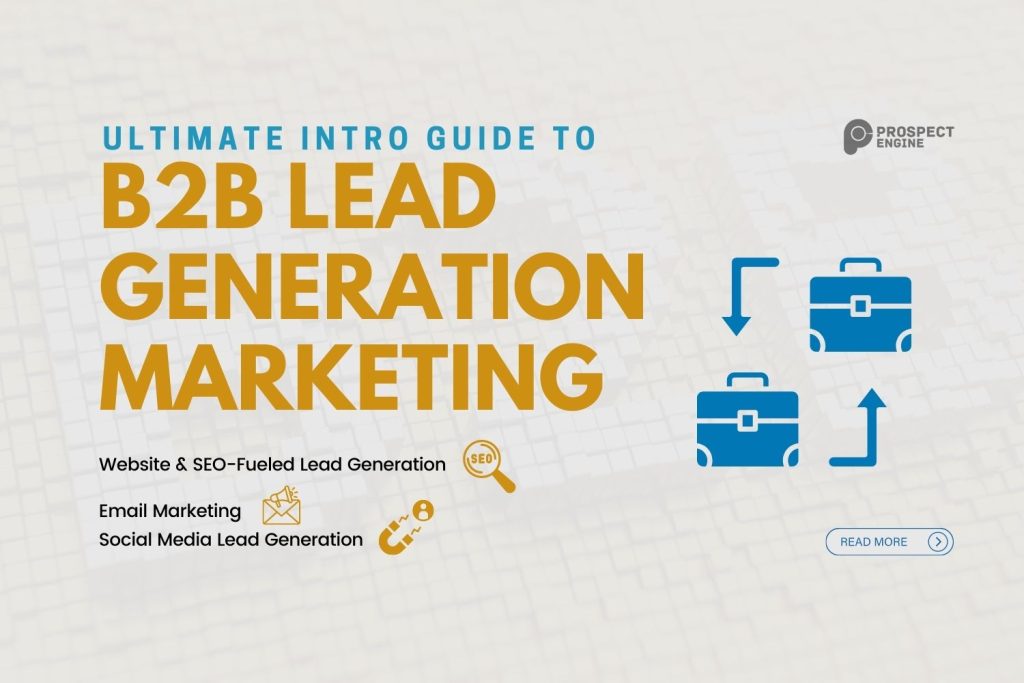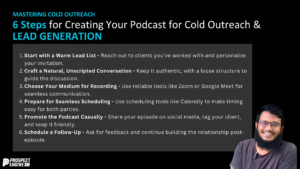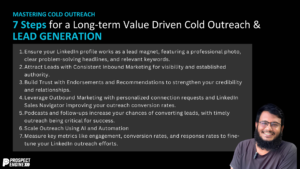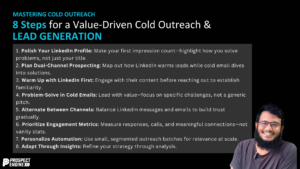B2B lead generation is a critical component of any business strategy, with 79% of marketers worldwide citing it as their top priority. However, in today’s rapidly changing digital landscape, B2B lead generation can be a complex and challenging process. In fact, 61% of marketers report that it is their biggest challenge in the digital arena.
As the landscape transforms, B2B (business-to-business) businesses are at the forefront of navigating these changes. The 2021 Marketing Leadership Benchmark Report by Drift highlights the significant hurdles that B2B marketers must overcome, including creating impactful content, digitalizing B2B marketing strategies, gaining insight into the customer journey, and determining attribution.
The digital age has opened up a plethora of opportunities for businesses looking to stay ahead of the curve in B2B marketing. With an abundance of resources, tools, and information at your fingertips, it’s easier than ever to keep abreast of the most effective tactics for lead generation.
But where to begin? With so many options available, it can be overwhelming to determine which strategies will best suit your business needs. That’s why we’ve compiled a comprehensive guide to the top B2B lead generation tactics, complete with examples and the best lead generation channels to explore.
So, without further ado, let’s delve into the world of B2B marketing and discover the most impactful ways to generate high-quality leads. Whether you’re a seasoned pro or just starting out, this guide is designed to provide valuable insights and practical advice to help you achieve your lead generation goals.
What Is the Lead Generation Process in B2B?
Lead generation is a crucial aspect of business success that involves utilizing various tactics to identify and attract prospective customers for a product or service. It’s the key to discovering qualified candidates who will benefit from what your business offers.
In the B2B realm, businesses are each other’s clientele, unlike the B2C (business-to-consumer) model, where a company’s primary revenue source is consumers.
The B2B lead generation process has long been a critical component of the initial stages of the sales cycle within the B2B landscape. These early steps are vital in establishing a foundation for future growth and prosperity.
Prospecting: The pursuit of identifying potential customers takes center stage in the initial step of this process. This task can be achieved through a combination of inbound and outbound methods. Inbound prospecting involves attracting prospective customers organically through their own search, while outbound entails actively reaching out to individuals who you believe may benefit from your product(s) or service(s).
Researching: Once you’ve curated a list of prospects, it’s crucial to delve deeper and uncover their needs, wants, and behaviors. Market research provides valuable insights that inform your next steps.
Approaching: Armed with a wealth of knowledge about your prospects, you must now determine the best course of action to win them over. This stage is where various online tools, social media platforms, website content, and software come into play to help you connect with your prospects and make a lasting impression.
With the successful completion of the initial three steps, your lead generation process will be underway, and you’ll be poised to navigate the remaining phases of the challenging B2B sales cycle. The culmination of your efforts will result in a well-defined and robust pipeline ready to convert prospects into loyal customers.
Which B2B Lead Generation Methods Work Best?
Maximizing the effectiveness of your lead generation efforts requires a keen understanding of the most impactful tactics in the current landscape. As we delve into the realm of generating leads for 2022, let us uncover the top methods for attaining the results you seek.
Search marketing is a dynamic and multi-faceted approach to capturing leads online. It encompasses a range of tools and tactics, both organic and paid, designed to maximize a company’s online visibility and reach. For instance, through organic search marketing, businesses can employ SEO strategies to secure a prominent position on SERPs for search terms and keywords relevant to their industry. This type of search marketing involves leveraging the latest optimization techniques and adhering to search engine algorithms to drive organic traffic and generate leads.
On the other hand, paid search marketing, such as Google Search Ads, offers B2B companies a more targeted approach to lead generation by allowing them to purchase clicks or leads based on specific search terms. In this way, businesses can reach their ideal audience more effectively and achieve their desired outcomes with greater efficiency.
In the realm of content marketing, companies have the opportunity to reach their target audience throughout the entire customer journey. Content marketing is a wide-ranging discipline that includes everything from blog posts, email campaigns, social media posts, and case studies to surveys, newsletters, webinars, and much more. By providing high-quality, informative content that resonates with their audience, businesses can establish themselves as thought leaders and cultivate a loyal following.
After a lead’s initial engagement, email marketing offers an effective way to keep them connected to your business. With a strong email marketing strategy, B2B companies can create a series of personalized, relevant, and informative emails that nurture their leads over time. By providing value at every touchpoint, businesses can foster trust and build strong, long-lasting relationships with their audience.
Finally, while social media marketing is incredibly popular in B2C, it often lacks the same traction in B2B. To overcome this challenge, outsourcing social media marketing, particularly on professional networks like LinkedIn, can be a valuable solution. As the most effective social media channel for B2B lead generation, LinkedIn offers an ideal platform for businesses to share their content and reach their target audience. With 33% of B2B decision-makers using LinkedIn for research purposes, it’s clear that businesses have a tremendous opportunity to generate leads, build their brand, and establish their expertise through this powerful channel.
What Strategies Would You Use to Generate Leads for a B2B Business?
Implementing effective lead-generation techniques requires a well-crafted focused strategy that will yield a tangible return on investment. Without a strategic approach, your efforts may be futile.
To help guide your efforts, Forbes has compiled a list of seven top-notch B2B lead-generation strategies that are expected to be crucial in 2022. These strategies are proven to work and, when executed correctly, can be a game changer for any business looking to generate leads. Let’s take a closer look at each of these strategies and see how they can benefit your lead-generation efforts.
-
- Forge strategic alliances – Seek out businesses whose services complement your own, and develop mutually beneficial relationships through collaboration and referral programs.
-
- Offer valuable resources – Establish your company as a thought leader by providing quality, actionable information that educates and empowers your target audience.
-
- Educate through engagement – Host webinars and other educational events, and capture leads by exchanging valuable content for email addresses.
-
- Stay data-driven – Keep a pulse on consumer buying and search behaviors, and use this information to optimize your content and maximize lead generation success.
-
- Outsource expertise – Lead generation is a time-intensive and complex process, making it an ideal candidate for outsourcing to experienced professionals.
-
- Automate for efficiency – Leverage CRM, sales performance software, and social media analytics tools to streamline lead tracking and performance analysis.
-
- Embrace continuous improvement – Lead generation is a marathon, not a race. Strive for constant progress, experimenting with new tactics and optimizing existing strategies to keep lead generation efforts thriving.
What Are the 3 Approaches to Lead Generation?
Generating leads is a critical aspect of B2B marketing, and businesses can employ three prevalent strategies to achieve this goal.
-
- Website & SEO-Fueled Lead Generation: Companies can tap into the potential of website traffic to generate leads by employing a suite of SEO tools and utilizing carefully selected keywords. However, it’s worth noting that with each added second of load time, website conversion rates tend to drop by an average of 4.42%, highlighting the significant challenge of capturing leads from an audience with ever-increasing expectations for speed.
-
- Email Marketing: A staggering 79% of B2B marketers believe that email marketing is the most effective lead-generation tool. It’s a tried and tested method that can deliver results for businesses of all sizes.
-
- Social Media Lead Generation: This type of lead generation is on the rise, particularly on a crowded platform like LinkedIn, designed specifically for businesses to engage with each other. Here, we’ll examine some of the most effective B2B lead generation methods on this dynamic medium.
B2B Lead Generation Examples
B2B lead generation is a complex and dynamic field with a multitude of strategies to choose from. Some of the most effective include Pay-per-click (PPC) campaigns, blog lead generation, and social media marketing.
PPC, a search marketing tactic, utilizes tools such as Google Ads, Display Network, and LinkedIn Ads to drive leads. This approach allows brands to reach customers in a targeted, measurable way, making it a popular choice among marketers.
Blogging is another powerful lead generation strategy, where brands create valuable and intriguing content to attract leads. By enticing potential customers with high-quality content, brands can collect information, such as email addresses, and convert these visitors into qualified leads.
Social media, however, is the preferred choice for lead generation, according to 44% of marketers. And when it comes to B2B social media marketing, LinkedIn dominates with a commanding 85% of the market share. Facebook, although trailing behind, still holds a significant 71% of the market, while Twitter follows closely with 61%.
B2B Lead Generation on LinkedIn
LinkedIn is fast becoming the go-to platform for B2B marketing, and there’s no shortage of statistics to prove it. With an impressive 850 million members and a staggering 95% of B2B marketers leveraging the platform in 2020, it’s not surprising that LinkedIn has secured its position as the top B2B social media channel.
But the platform’s popularity isn’t just limited to its size. In the past two years, engagement on LinkedIn has skyrocketed, with a 60% increase in activity. This is all the more impressive when you consider that 40% of its users visit the platform every day, with a whopping 65 million of those users holding decision-making positions within their companies.
When it comes to B2B marketing specifically, LinkedIn truly shines. A remarkable 77% of B2B marketers consider it the best platform for organic content distribution, with an even more impressive 40% saying that LinkedIn is the most effective network for generating high-quality leads.
In a world where traditional search engines are often overwhelmed with noise, LinkedIn offers B2B companies a unique opportunity to reach a highly engaged, targeted audience. So, if you’re looking for a way to cut through the clutter and connect with the right people, it’s time to start leveraging the power of LinkedIn.
B2B Lead Generation Agency
Quality lead generation continues to pose a formidable challenge for B2B marketers in the present day, where the digital landscape is in a constant state of flux. But fret not, for with the proper toolbox at hand and the aid of a seasoned B2B lead generation agency, you too can thrive and generate leads effectively.
However, before delving into the lead generation process, it is imperative to accord utmost importance to the trifecta of prospecting, targeting, and research. These form the cornerstone of any successful lead generation campaign. Once you have established a solid foundation, you can then turn your attention to crafting the ideal content and choosing the most appropriate platform to reach and engage with leads.
In essence, comprehending the nuances of lead generation techniques is the initial step towards accomplishing quality B2B lead generation.





